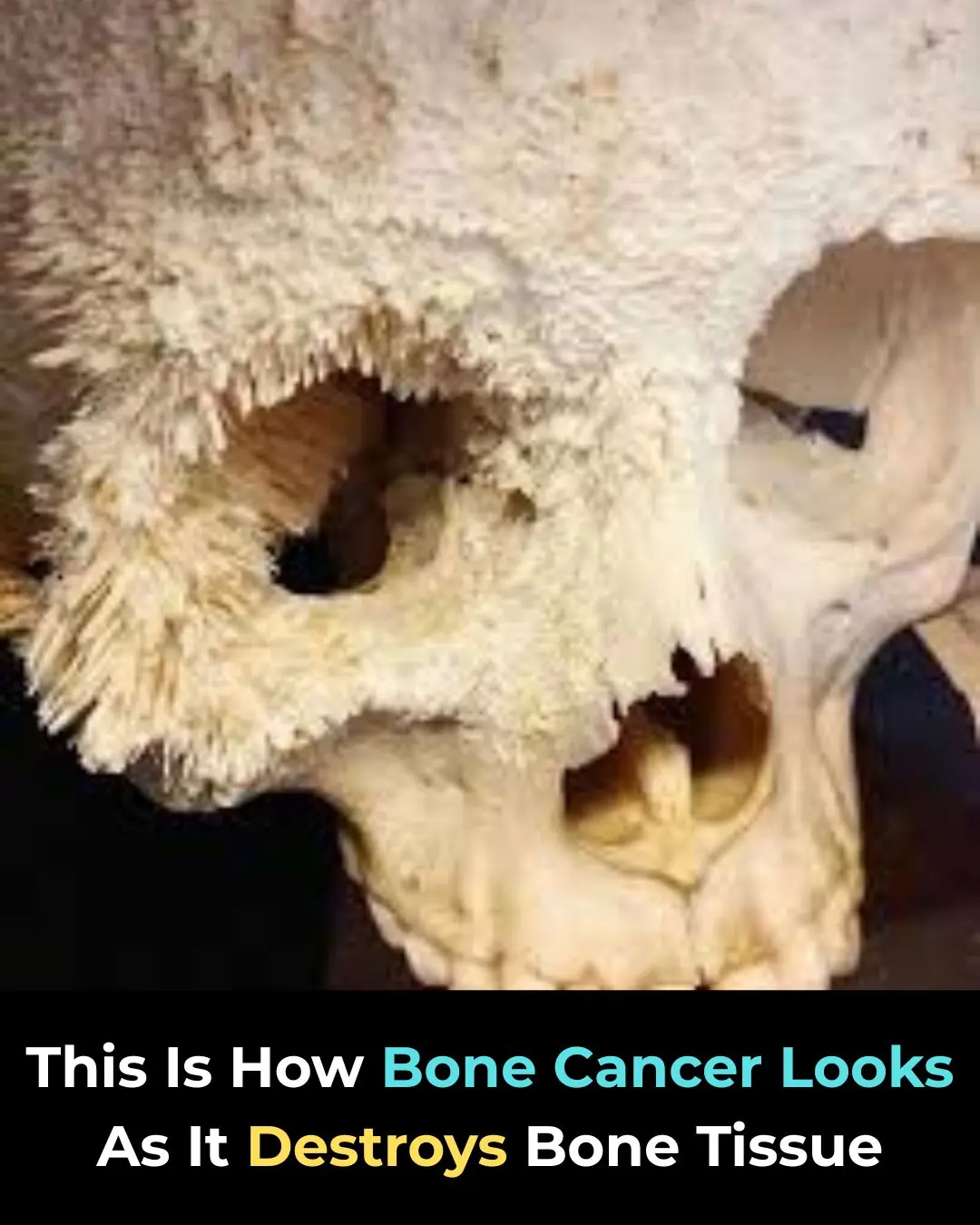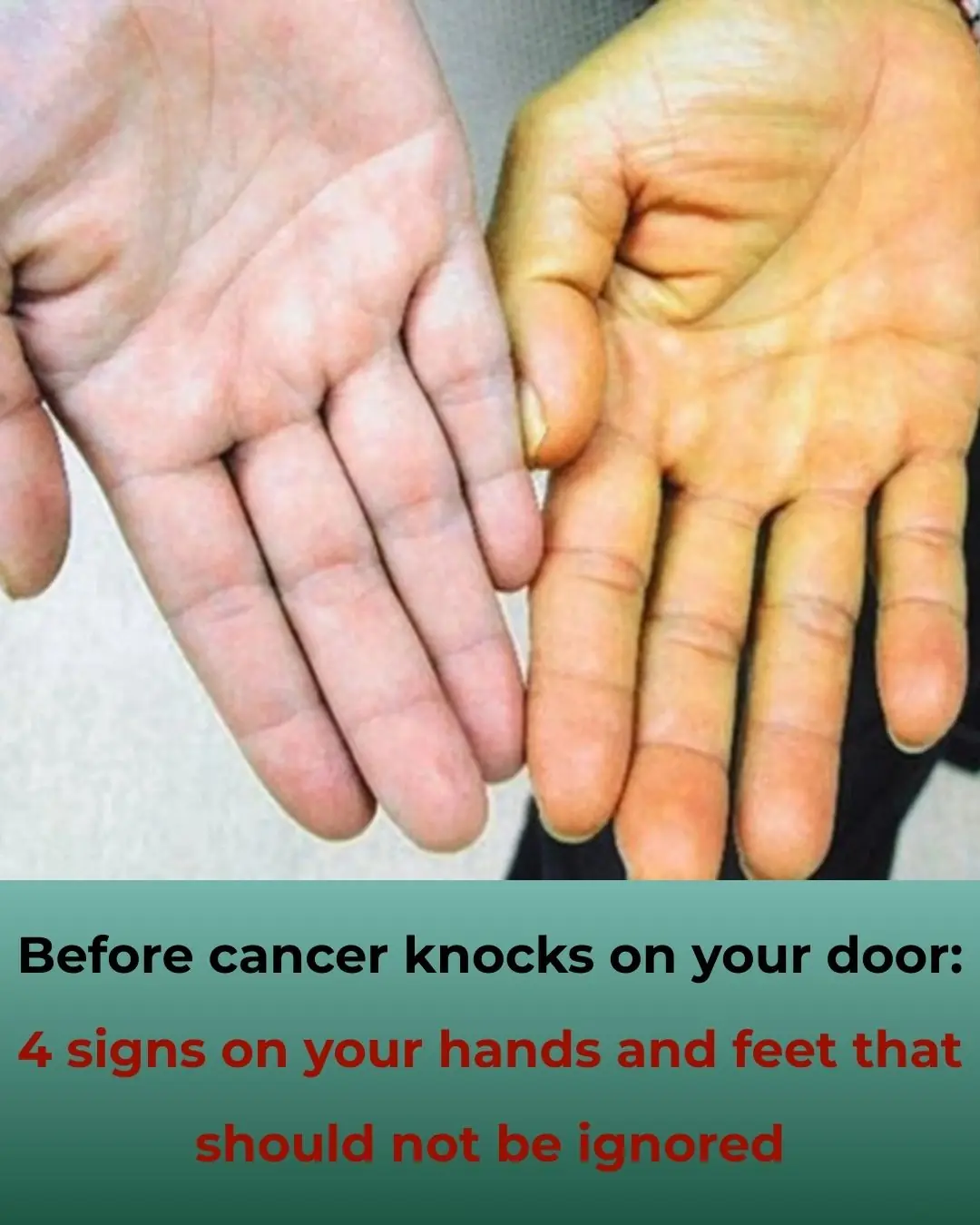
Bone Cancer: The Silent Destroyer That Strikes From Within

Bone cancer is often described as one of the most aggressive yet silent cancers — not because it spreads the fastest, but because it causes serious internal damage long before most people realize something is wrong. Unlike cancers that develop in soft tissues, bone cancer eats away at the very structure that holds the body together. By the time symptoms become obvious, significant destruction may have already occurred.
And while viral images online often exaggerate what bone cancer “looks like,” the real danger is far more subtle and far more serious.
How Bone Cancer Damages the Body
Bone cancer affects bone tissue in two distinct and dangerous ways:
1. Osteolytic Lesions — Dissolving Bone From the Inside
Osteolytic lesions gradually destroy bone tissue, creating weak spots and hollow areas that can no longer support normal daily activity. These weakened areas often go unnoticed until a minor fall or simple movement leads to a painful fracture.
2. Osteoblastic Lesions — Building Abnormal, Brittle Bone
Instead of destroying bone, osteoblastic lesions produce excess, abnormal bone. While this may sound protective, it is the opposite — the bone becomes dense but fragile, increasing the risk of sudden breaks and deformities.
Both types of lesions make bones structurally unstable, and both can exist at the same time in different parts of the body.
Most Bone Cancers Are Not “Bone Cancers” at All
A common misconception is that bone cancer usually starts in the bone. In reality, most cases are secondary cancers, meaning they originate elsewhere and spread (metastasize) to the bones.
The most common cancers that metastasize to bone include:
-
Breast cancer
-
Lung cancer
-
Prostate cancer
-
Kidney cancer
-
Thyroid cancer
Primary bone cancers — such as osteosarcoma, Ewing sarcoma, and chondrosarcoma — are far more rare but extremely aggressive, especially in adolescents and young adults.
Early Signs Are Subtle and Often Ignored
One of the reasons bone cancer is so dangerous is that its early symptoms can easily be mistaken for everyday aches, injuries, or fatigue.
Common early warning signs include:
-
Dull, persistent bone pain that gradually worsens
-
Swelling or tenderness in a bone or joint
-
Fractures from minor injuries that should not cause a break
-
Unexplained fatigue or weakness
-
Reduced mobility or stiffness in the affected area
Because these symptoms often develop slowly, people may delay seeking medical care — giving the cancer more time to progress.
Early Diagnosis Saves Lives
Detecting bone cancer early dramatically improves treatment success. Modern imaging tools make it possible to identify lesions even before symptoms become severe.
Key diagnostic tools include:
-
X-rays – often the first step when bone abnormalities are suspected
-
MRI scans – provide detailed images of bone marrow and soft tissue
-
CT scans – help assess bone structure and detect lesions
-
Bone scans – identify areas of increased bone activity
-
Biopsy – confirms the type of cancer and guides treatment
Early detection can be the difference between a treatable disease and a life-threatening one.
Awareness Matters
Bone cancer may be silent, but awareness does not have to be. Understanding the early signs, taking persistent pain seriously, and recognizing high-risk factors can help people seek medical attention sooner.
Knowledge may not prevent bone cancer — but it can absolutely save lives.
Stay aware. Stay informed. And share what you know. 💛
News in the same category


She Lost Half Her Brain — But Rebuilt an Entire Life

3 Flowers That Make Snakes Tremble in Fear

I was totally in the dark on this!

Most People Get This Wrong — Here’s How Often You Should Refresh Everything

Mine Could Definitely Flower More

The Kid Who Was Surprised By Dad With Birthday Bat In Viral Video Hits Home Run With Bat And Dad Catches It

Delaware Post Office Renamed In Honor of Mary Ann Shadd Cary, First Black Woman Publisher

Meet Shantrelle P. Lewis, Curator, Filmmaker & the Preeminent Scholar of Global Black Dandyism

Jalen McKee-Rodriguez Makes History As First Openly Gay Black Man To Be Elected To Office In Texas

Breaking Bob: How a 75-Year-Old Turned a Five-Minute Smoke Break into a Viral NYC Spectacle

Aretha Duarte Makes History As First Black Latin American Woman To Climb Mount Everest

Issa Rae Opens New ‘Downtown Dough’ Pizzeria in L.A.

106 & Park to Celebrate 25 Years With an Epic Reunion at the 2025 BET Awards

She Just Opened The First Black-Owned Direct Primary Care Facility In Washington State

Stacey A. Dixon Set To Make History As The Highest Ranking Black Woman In U.S. Intelligence

First Black Woman To Become Union Pacific Railroad Train Engineer Releases New Autobiography

Remembering Fashion Icon André Leon Talley and the Powerful Legacy He Left Behind
News Post

How to Get Rid of Bad Breath (Halitosis): Scientifically Proven Home Remedies

Frozen Pork? Don’t Soak It in Water! Use This Trick to Thaw in 10 Minutes and Keep It Fresh

Clothes Turning Yellow? This Simple Trick Will Make Them Bright White Again

Tried this the other day and it did wonders!

4 Warning Signs on Hands and Feet You Should Not Ignore Before Cancer Strikes

7 Drinks to Cleanse Phlegm, Boost Lung Health, and Combat Bacteria and Viruses

You are doing it all wrong. Here's the right way to store produce

How to Clean a Showerhead to Prevent Clogging: Simple Tips to Keep It Working Like New Without Spending on Replacements

The Health Benefits of Black Bean Soup with Chicken Feet: As Effective as Ginseng

Goodbye Cavities? A Future Where Teeth Heal Themselves May Be Closer Than We Think

Got High Blood Pressure? Try This 2-Ingredient Tea!

She Lost Half Her Brain — But Rebuilt an Entire Life

Put a drop of essential oil on clothes while soaking: "Special" use, not everyone knows how to apply it

Tips for using air conditioners, staying cool all day without worrying about skyrocketing electricity bills

How to stew delicious braised meat with Northern style, great to eat with rice in cold weather

10 ways to get rid of cockroaches from your home permanently, simple, safe and economical

How to fry delicious, crispy spring rolls that won't get soggy: Remember not to put them in boiling oil right away.

Smart people always put a towel in the refrigerator, knowing its uses everyone wants to learn from it.
